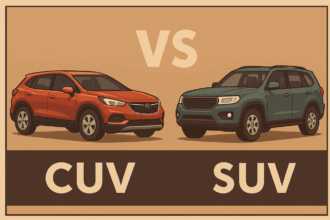Buying a used car can be a great way to save money, but it also comes with its share of risks. Whether you’re looking for a daily driver, a reliable family SUV, or a second vehicle for commuting, making an informed decision is key. With the right steps and a bit of patience, you can avoid costly mistakes and drive away with confidence.
1. Define Your Budget and Needs
Start by setting a realistic budget—not just for the purchase price, but also for insurance, registration, maintenance, and potential repairs. Next, think about what you need from a vehicle: fuel efficiency, cargo space, safety features, off-road capability, or tech amenities?
2. Do Your Research
Once you have a target vehicle in mind, research its average market value on sites like Kelley Blue Book, Edmunds, or TrueCar. Pay close attention to reliability ratings, common problems, and the cost of ownership for the specific make and model.
3. Always Check the VIN History
Before meeting a seller or test-driving the car, request the VIN (Vehicle Identification Number) and run a full history report. This step can reveal vital information about the vehicle’s past, including previous accidents, title issues, ownership changes, and odometer rollbacks.
We highly recommend reading this in-depth guide to VIN checks before making any commitments. It could help you spot red flags early and avoid buying a car with hidden problems.
4. Inspect the Vehicle Thoroughly
Bring a flashlight and check the car’s body for mismatched paint, rust, and uneven panel gaps. Look under the hood for leaks, corrosion, or cracked belts. Don’t forget the tires—uneven wear could indicate suspension or alignment issues.
5. Get a Professional Inspection
Even if the car looks great, it’s wise to have a certified mechanic perform a pre-purchase inspection. For $100–$200, they can spot issues you might miss and provide leverage for price negotiation.
6. Take a Proper Test Drive
Drive the car on different road types—city streets, highways, and hills if possible. Pay attention to steering response, brake feel, transmission smoothness, and unusual noises. Test features like A/C, infotainment, power windows, and sensors.
7. Review the Paperwork
Ensure the seller has a clean title in their name. Review service records if available. If you’re buying from a private seller, match their ID to the title. If from a dealership, confirm the final out-the-door price includes taxes and fees.
8. Negotiate with Confidence
Use your research, inspection results, and VIN report as tools to negotiate. If the seller won’t budge, be ready to walk away—there are always other cars.
9. Beware of Scams
- Avoid sellers who rush the process or demand wire transfers.
- Never meet in isolated areas. Use safe transaction locations like bank parking lots or police stations.
- If it sounds too good to be true, it probably is.
10. Final Thoughts
A used car can offer great value, especially when you approach the process methodically. Don’t skip steps—especially the VIN check. A few hours of homework can save you thousands in repairs or headaches down the road.
Be smart, be skeptical, and most importantly—don’t settle for less than what you need and deserve.





